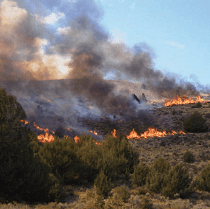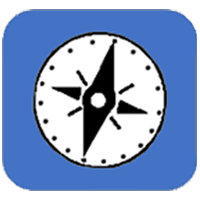Events
The “right” scale for effective rangeland fire planning and management
View webinar recording. Helping landowners and agencies engage in collaborative planning. Instructor: Katie Wollstein.
Pinyon-Juniper Management on the Colorado Plateau Workshop
Save the date flyer. In-person attendance is full, but stay tuned for some post-event resources and recordings.
Prescribed fire and wilderness: Barriers and opportunities in a time of change
Webinar recording. Sean Parks, USFS RMRS.
Fuels treatment effectiveness
Webinar recording. Fire and land manager-focused panel discussion hosted by the USDA Forest Service Rocky Mountain Research Station
Update on the Bruneau-Owyhee Sage Grouse Habitat Management (BOSH) Project
Video recording (16:27). The Bruneau-Owyhee Sage Grouse Habitat (BOSH) Project has been under way for six years now, and approximately 140,000 acres of land have been treated to reduce juniper encroachment and open up the sage-steppe habitat for sage grouse, song birds, spotted frogs and more. This is the largest sage grouse habitat restoration project…
Basic Grass Identification 2-Day Short Course
What: Basic Identification of Grasses: A 2-day short course taught by Arnold (Jerry) Tiehm, Great Basin Flora Specialist When: Course will be offered March 24-25 and 26-27, 2025. Cost: $ 170.00 for non-students, $ 90.00 for students. Registration: By contacting the instructor ([email protected] | 775-742-9180-C). Bringing a check to class made out to Board of…
LANDFIRE data supports disturbance tools and assessments
Webinar recording. In this LANDFIRE Office Hour, USFS Research Ecologists, Jen Costanza and Matt Reeves walk viewers through the USDA Forest Service's Resource Planning Act (2020) Assessment, with a focus on how LANDFIRE data supports understanding of recent and future drought exposure for rangeland vegetation types across the western U.S. The also discuss emerging technologies…
Wildfire risk and mitigation opportunities in the US sagebrush biome
Webinar recording. Feb 29 2024 Missoula Fire Lab Seminar Series Presenter: Karen Short, RMRS Research Ecologist.
Defending and growing the core by breaking the cycle of annual grass invasion
Virtual workshop recordings and resources. Invasive annual grasses–such as cheatgrass, medusahead, and ventenata–are the leading cause of degradation and loss of America’s sagebrush grasslands, reducing forage and habitat, fueling more frequent and larger wildfires, and threatening rural economies. While invasive grasses are widespread, there remains a generational opportunity to proactively address this threat. However, many…





